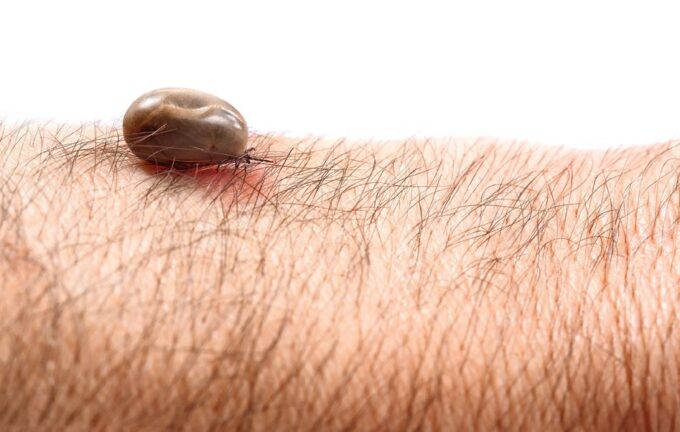Ticks benefit from global warming
In Switzerland, there are around 14,000 tick bites per year, better known as tick bites in the vernacular. The trend is upward. Researchers from western Switzerland have found a possible explanation for the extraordinary increase in tick bites in recent years. Their analyses show that ticks are becoming increasingly comfortable in Switzerland.

Small, annoying and not without danger: that's how you could characterize a tick, somewhat casually put. Of all places, where one prefers to be in this wonderful spring weather, namely in nature, the arachnids are lurking. Up to a height of 1.5 meters above the ground, they hope for human or animal visitors in the undergrowth and on plants at the edges of forests and paths.
Habitat has increased by almost two thirds
"According to a study by researchers from western Switzerland, the habitat suitable for ticks increased by almost two-thirds between 2009 and 2018," notes Felix Ineichen, tick expert at Suva. In figures, this habitat has increased by more than 4,000 square kilometers in the period mentioned, which is roughly twice the area of the canton of St. Gallen.
The changed climatic conditions could be one reason why ticks are feeling more and more at home in Switzerland. "Especially at altitudes between 500 and 1,000 meters above sea level, conditions have changed in such a way that the ticks increasingly like it there," says Ineichen. This development is reflected in the numbers of tick bites. Between 2012 and 2016, there were an average of 10,000 tick bites per year. The evaluation of the Corona years has not yet been completed. However, estimates already show that there were already around 14,000 cases per year in the follow-up period between 2017 and 2021. This corresponds to an increase of 40 percent.
Weather strongly influences the figures
Although there has been a clear trend towards an increase in the number of tick bites in recent years, the numbers are subject to annual fluctuations. The weather has a great influence on the number of tick bites. If temperatures rise as early as March, this causes a double effect. "On the one hand, the ticks wake up earlier from their winter torpor, and on the other, people spend more time outdoors," says Ineichen.
Statistics confirm that there is a correlation between rising temperatures and the number of tick bites, as accident insurers record the highest number of tick bites in the months of May, June and July.
How do I protect myself from tick bites?
Ticks can cause the infectious disease Lyme disease or meningitis. Therefore, it is important to protect yourself against tick bites. These tips should be followed:
- In the forest and gardens, avoid brush and undergrowth to avoid shedding ticks.
- Wear closed clothing of light color. This way ticks can be detected and removed before they get on the skin.
- Use tick repellent for skin and clothing.
- After spending time in the forest or garden, check body for ticks.
- If a tick is found: Remove as soon as possible with pointed tweezers or special tick forceps.
- Suva recommends vaccination against meningitis TBE (early summer meningoencephalitis), because there is no specific treatment for this rare but serious disease. Vaccination is the best way to avoid it.
Further useful information at Suva:
Professional article "Tick bite: Does insurance cover it?"
Professional article "Attention tick - a bite with consequences".









